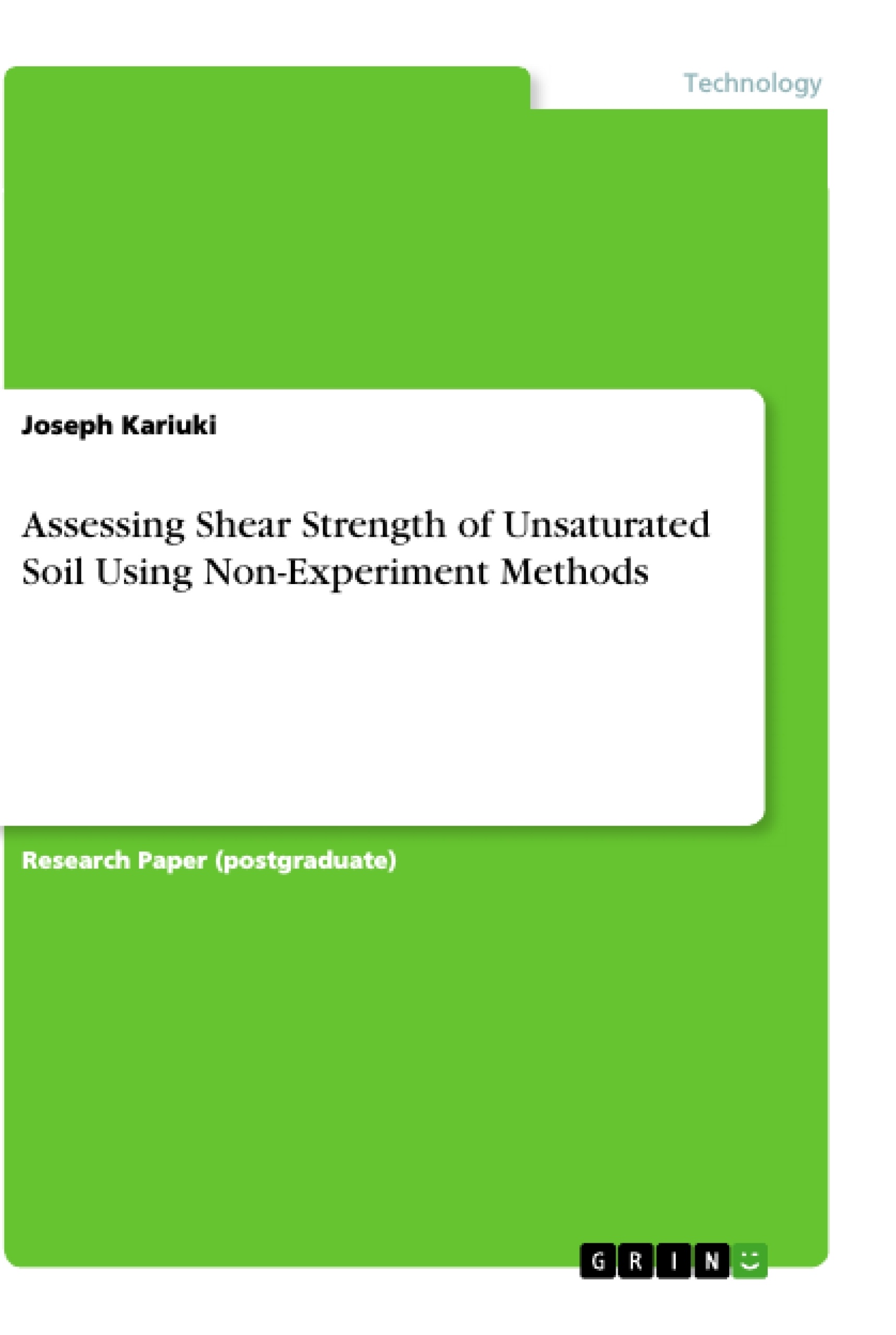This study used non-experimental approaches to evaluate the shear strength of unsaturated soil. Numerous reasons exist for considering non-experimental approaches acceptable for determining the shear strength of unsaturated soils. One of the primary reasons why non-experimental techniques might be regarded a viable option is because performing tests to determine the shear soils is a complicated and time-consuming operation.
Typically, the technique entails a number of operations that need specialized equipment and the execution of methodical stages. If the findings are required quickly, the time necessary to obtain them might be harmful to the entire operation. Due to the fact that engineering processes frequently need fast results, experimental approaches may not be effective in certain circumstances.
Inhaltsverzeichnis (Table of Contents)
- Abstract
- Introduction
- Literature Review
- Unsaturated Soil Mechanics
- differentiating between unsaturated saturated soils.
- Nature and genesis of unsaturated soils.
- Unsaturated soil characteristics
- The Problem of using unsaturated soil mechanics
- The Concept of Suction Stress and Suction Strength
- Explaining Suction Stress
- Suction Strength of Unsaturated Soils
- Model for Shear Strength of Unsaturated Soils Based on the Hydraulic State.
- Model Verification
- Strength Property under Single Drying Hydraulic Path.
- Unsaturated Soil Mechanics
- Methodology
- Equation for Shear Strength
- Verification Procedure Using Experimental Data
- Results and Discussions
- Results.
- Discussion.
- Conclusions and Discussions
- Conclusions.
- Limitations.
- Recommendations for Further Research.
- List of Figures
- References
Zielsetzung und Themenschwerpunkte (Objectives and Key Themes)
This paper aims to investigate non-experimental methods for determining the shear strength of unsaturated soils. Due to the complexity and time-consuming nature of traditional experimental methods, non-experimental approaches are presented as a viable alternative, particularly when rapid results are required. The study explores the applicability of previously computed calculations for predicting and measuring the shear strength of unsaturated soils.
- Shear strength of unsaturated soils
- Non-experimental methods for determining shear strength
- Advantages and limitations of non-experimental approaches
- Application of previously computed calculations
- Suction stress and its influence on shear strength
Zusammenfassung der Kapitel (Chapter Summaries)
- Introduction: Introduces the importance of understanding the shear strength behavior of soils in various fields, emphasizing the specific challenges of unsaturated soil mechanics. It defines key concepts like matric suction and its influence on the mechanical behavior of unsaturated soils. The chapter also highlights the limitations of experimental methods for determining shear strength.
- Literature Review: This chapter provides an in-depth discussion of unsaturated soil mechanics, covering topics like the differentiation between unsaturated and saturated soils, their genesis, and characteristics. It explores the difficulties of applying unsaturated soil mechanics and explains the concepts of suction stress and suction strength. The chapter further presents a model for calculating shear strength based on the hydraulic state of the soil and discusses its verification process.
- Methodology: This section details the methodology used in the study, focusing on the specific equation for shear strength and the procedure for verifying it using experimental data. It lays out the framework for analyzing and validating the proposed non-experimental approach.
- Results and Discussions: This chapter presents the results obtained from the study and provides in-depth discussions on their implications. It analyzes the findings in relation to the existing literature and explores the practical significance of the results.
Schlüsselwörter (Keywords)
This study revolves around key concepts such as unsaturated soil mechanics, shear strength, non-experimental methods, matric suction, hydraulic state, and model verification. The paper explores the potential of utilizing previously computed calculations to predict and measure the shear strength of unsaturated soils, offering a valuable contribution to the field of geotechnical engineering.
- Arbeit zitieren
- Joseph Kariuki (Autor:in), 2022, Assessing Shear Strength of Unsaturated Soil Using Non-Experiment Methods, München, GRIN Verlag, https://www.grin.com/document/1172310



